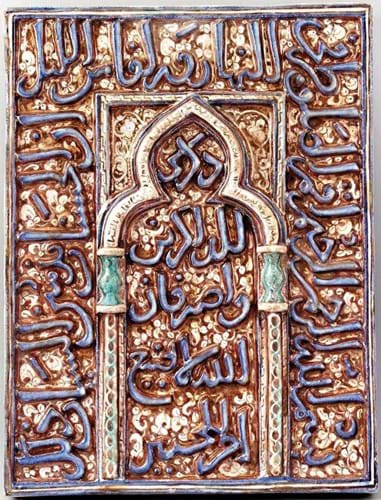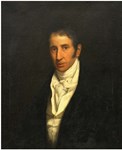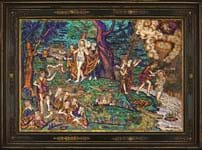Offered at an Islamic and Oriental sale on May 23, it went on the phone to a private collector in London competing against a dealer. A 25% buyer’s premium was charged.
Lustre wares and large architectural elements played a prominent role in the revival of the ceramic industry in Persia after the hiatus that followed the invasion of the Mongol hordes in the 1220s. Pottery from the Ilkhanid period (1256–1353) brought both a fresh technical approach and a new design vocabulary.
Mosque relic
This tile measuring 19in (48cm) high x 15in (37cm) wide with a thickness of around 2in (5cm) probably formed part of a central section from a monumental Kashan mihrab – the niche in the wall of a mosque that indicates the direction of Mecca.
It is moulded in relief with verses from the Qur’an to a foliate ground and enhanced with cobalt blue and turquoise.
Similar tiles are in the Victoria and Albert Museum and the Metropolitan Museum of Art, New York while another, accompanied by a copy of the original purchase invoice dated March 2, 1922 sold for a mighty £413,000 as part of a Sotheby’s Arts of the Islamic World sale in 2016. Like the tile in Surrey it had been estimated at £20,000- 30,000.















